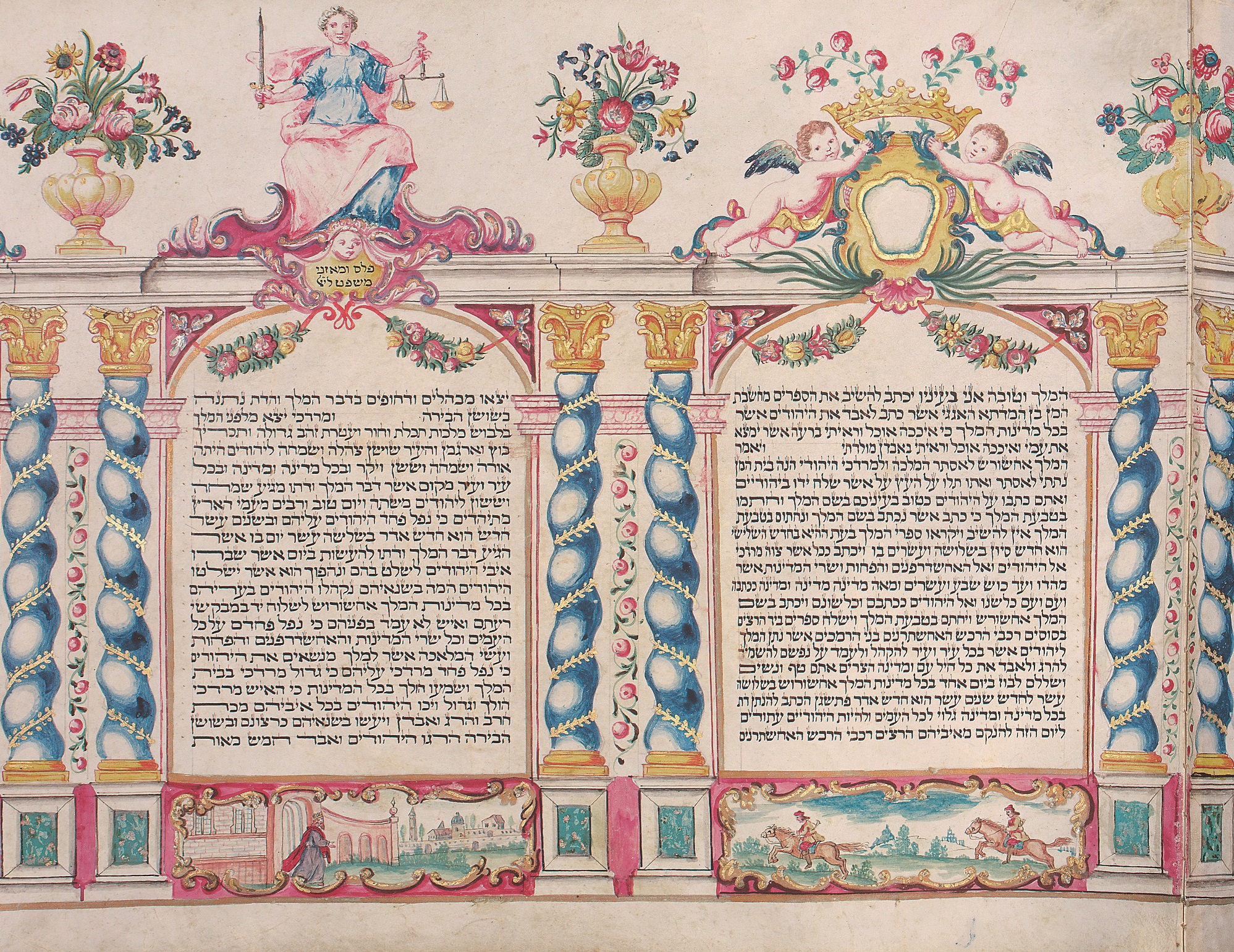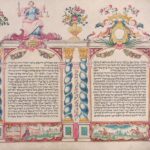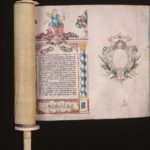Ivory Megillah
- What can we see?
We can see some Hebrew writing in columns. Above one column of text we can see the figure of Justice holding some scales.
Look closely, what can you see?
- What do we know?
This megillah was made in the 18th century by an unknown artist. The Rococo style of the illustrations and decorations suggests that it comes from Northern Italy. This megillah belongs to a group including six other megillot, similarly decorated, which are held in various collections around the world.
This megillah contains 17 columns of Hebrew text written between arches decorated with garlands and surrounded on either side by twisted columns.
At the top of one column of text is the figure of Justice. This type of image is called an allegorical figure which is an image of a person who symbolises an idea. In this case, the figure of Justice sits atop the part of the story which describes how justice was served.
The small illustrated scenes below the text depict different parts of the story. In the scene on the left, King Ahasuerus is walking outside his palace. The scene on the right depicts riders on horseback.
- What do we wonder?
We might wonder who made this megillah scroll? We might wonder how heavy the megillah is to hold?
What do you wonder?
- Object File
Object name: Megillah/Megillah on ivory roller
Date: 18th century
Catalogue number: JM 291 (Image 6)
Material(s): Parchment, Ivory, Ink, Gouache, Gold & Silver paint
Artist: Unknown
Size: Scroll 65 cm in length; Roller 437 cm in length, 43 cm in height
On display in the Jewish Museum? Yes
Megillah, or megillot in the plural form, is the Hebrew word for the scroll on which the biblical Book of Esther is traditionally written. The Book of Esther tells the story of the festival of Purim.
The story of Purim took place 2,400 years ago. It tells the story of how Queen Esther and her cousin Mordecai saved the Jewish people from persecution by Haman. Haman was the prime minister to King Ahasuerus. Haman persuaded the King to order the persecution of the Jewish people. The leader of the Jews was a man named Mordecai. Mordecai wanted to save the Jewish people. Mordecai’s cousin Esther was married to King Ahasuerus. King Ahasuerus did not know that Esther was Jewish. Mordecai persuaded Esther to tell the King who she was and to spare the Jewish people. King Ahasuerus accepted her request. Haman was sent to the gallows, and Mordecai became the new prime minister.
Purim is celebrated on the 14th day of the Hebrew month of Adar, which occurs in the early spring. Jewish people celebrate the joyful story of Purim with elements similar to carnival. It is traditional for Jews to dress up in costume, perform plays, listen to music, and dance. Dressing up in costume is symbolic of the fact that even though God’s name is not mentioned once in the Purim story, God is still present. God is present, but hidden in the story. This is why Jewish people dress up on Purim, to hide themselves to symbolise how God is hidden in the Purim story.



